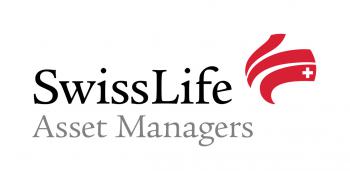| To view this news in your browser, please click here | ||||||||||||||||||||||||||||||||||||||||||||||||||||||||||||||

|
||||||||||||||||||||||||||||||||||||||||||||||||||||||||||||||
|
||||||||||||||||||||||||||||||||||||||||||||||||||||||||||||||
In the engine room of the performance machineDr. Tatjana Xenia Puhan, Head of Multi-Asset & Equity, Swiss Life Asset ManagersAnyone who still believes that the 30-year bull market for bonds is going to continue may not only have made a significant miscalculation, but also risks missing out on the right time to strategically refocus their portfolio. This is because while interest rates have already begun to rise in the USA, “risk-free” investments especially in Europe will likely continue to provide low returns for the foreseeable future. In addition, the withdrawal of central banks from the markets means investors will once again be on their own, leaving them to bear all the consequences of their decisions without any distortion. Stock market participants have received a rude reminder in recent months that risky assets like stocks offer higher returns because their value can fluctuate sharply. Managing risks in a targeted manner: The ideal time for factor-premium strategiesStocks are returning to their normal levels of volatility. Because of lower expectations for global growth they will also likely provide much more moderate returns than in previous years. Interest rates remain low. Achieving a certain target return in this environment while maintaining a specified risk budget seems at first glance to be like squaring the circle. The real trick now is finding sources of return that allow investors to be very diversified while using dynamic risk control to participate in returns on the stock market that are still expected to be relatively attractive. One way to exploit these sources of returns is a risk premia-based approach, which keeps volatility under control. Investing like Warren Buffet but in a systematic wayAlternative risk-premia strategies are based on the idea that an asset’s various sources of income and risk can be identified and isolated. The premiums involved are independent of the movements on the market (beta) and comparable with the alpha of traditional (discretionary) management approaches. Empirical studies have shown that even the returns achieved by investor legend Warren Buffet can be explained by factor premia if other market factors beyond the capital asset pricing model (CAPM) are included in the attribution analysis of the returns. Discretionary managers, however, do not use factor premia systematically, which can lead to uncontrolled and cumulating risks. Models, that exploit factor premia systematically, are therefore also called “smart beta”. Factors as drivers of excess returnsFactor premia are the most important drivers of the excess returns of a diversified equity portfolio. If they can be justified rationally, then they are risk premia. One example is the size premium that investors receive for the risk of investing in small companies, which may more quickly become insolvent and are less transparent. There are also anomalies and imperfections in the market, as suggested by empirical evidence, however, they arise at least in part from irrational investor behaviour or market friction. In both cases, these income sources can be exploited systematically to improve performance. Scientific research and the analysis of historical data show that there are a number of income factors. For stock selection, we rely on established measures of these factors, such as valuation criteria, quality, growth indicators and momentum indicators. Here are a few examples: Valuation factors in the sense that value investors like Warren Buffet use them include, for example, dividend return, the ratio of the price to book (P/B ratio) or price to earnings (P/E ratio) and the ratio of a company’s value (enterprise value, or EV) to the company’s earnings (EV/EBITDA). Low values for the latter three indicators point to a buying opportunity. Conversely, a high dividend yield may mean that the company is undervalued. A similar interpretation can be derived from a low ratio of enterprise value (EV) and revenue: The strong growth of such a company is not rewarded on the market. Companies experiencing short-term problems that are assessed incorrectly by the market can also be viewed as a purchase opportunity, as can long-term cycles of sectors and the sensitivity to macroeconomic changes. In addition to valuation and growth, quality is also a well performing factor that can be explained rationally. Thus, a high price/cash flow ratio, a high and sustainable return on equity, a high return on assets and high credit lines are also positive factors. Finally, the momentum of a stock indicates the strength of a security on the market, comparable to a very short-term trend. Independent of the market and of a “sixth sense”It is important to see that these factors are independent of company-specific risk, also known as idiosyncratic risk. Conversely, companies that are affected by these factors to a similar extent have, on average, similar return behaviour. This makes it possible to take advantage of these return drivers systematically. Such strategies are not based on analysts’ “sixth sense”; rather, they offer absolute transparency of decision-making criteria, portfolio construction and risk-return profile. The selection and weighting of the factors are decisive for risk-conscious performance. We rely on a combination of risk premiums (selection) and minimised volatility (weighting). Factor selection – portfolio construction I: use premia with a low correlationA portfolio is initially constructed using those securities that perform best in terms of the aforementioned risk factors: the better they perform, the higher the weighting. For those factors, the securities are each allocated to one of five quintiles. The securities in the first quintile are selected, while those in the last quintile are omitted. The stocks that come out ahead for all factors therefore receive the greatest weighting. In doing so, we keep an eye on diversification on two levels: first, our stock portfolios are broadly diversified, which avoids concentrated risks. Second, security selection is based on the selection of the factors with low correlation. This takes advantage of the fact that two different factors only rarely lead to exceptionally poor returns at the same time. In this way, the potential fluctuations of these systematic sources of excess return can be actively controlled. How the portfolio is weighted – portfolio construction II: controlling volatilityTo control overall risk and, in particular, to control volatility within the portfolio, the weightings of the individual securities arising from the selection process are adapted dynamically to the risk environment on the market. Here, we use a combination of two strategies: Minimum volatility (preference given to defensive securities) and risk parity (smaller securities receive greater weight while high idiosyncratic risk is well controlled). The principle of weighting in accordance with risk parity means that securities receive less weighting if they are more volatile – expressed simply, the weighting is 1/volatility. The minimum variance portfolio, by contrast, is a portfolio with the lowest volatility of all efficient allocations, which makes it possible to take advantage of diversification effects and correlations. The proportion of the two strategies is adjusted over time, giving the portfolios a more defensive or more aggressive character: if investor risk tolerance and the expected returns fall, the model puts greater emphasis on the minimum volatility weighting scheme. This construction approach leads to a portfolio with a low beta (sensitivity to the market). In the opposite case, the model relies more on risk weighting (risk parity), with the portfolio tending to emphasise smaller securities (although it also controls for high volatility), which typically makes it more aggressive. Increased volatility and greater market complexity require a change in thinkingIn conclusion, recent weeks have emphasized that while the market environment is more volatile and generally more complex, generating relatively strong stock returns requires a change in thinking. Strategies that make it possible to achieve excess returns in a transparent, systematic and (cost-)efficient manner while actively and dynamically controlling risks will play an especially important role here. BOX: How to invest?
Swiss Life Asset Managers has successfully implemented multi-factor models in its equity strategies for five years, such as its Swiss Life Funds (LUX) Equity USA or the Swiss Life Funds (LUX) Equity Euro Zone. Both funds offer a diversified range of factors as the basis for security selection, a unique dynamic weighting scheme for risk control, high liquidity of the underlyings and investment instruments and a purely systematic, quantitative approach. Thanks to their built-in active risk control mechanisms, our strategies have lower sensitivity to market movements; thanks to their defensive nature, meanwhile, they generate excess returns, especially in volatile markets.
Legal information |
||||||||||||||||||||||||||||||||||||||||||||||||||||||||||||||
|
||||||||||||||||||||||||||||||||||||||||||||||||||||||||||||||
|
||||||||||||||||||||||||||||||||||||||||||||||||||||||||||||||
|
amLeague |
||||||||||||||||||||||||||||||||||||||||||||||||||||||||||||||
| If you no longer wish to receive amLeague newsletters, unsubscribe here | ||||||||||||||||||||||||||||||||||||||||||||||||||||||||||||||








































